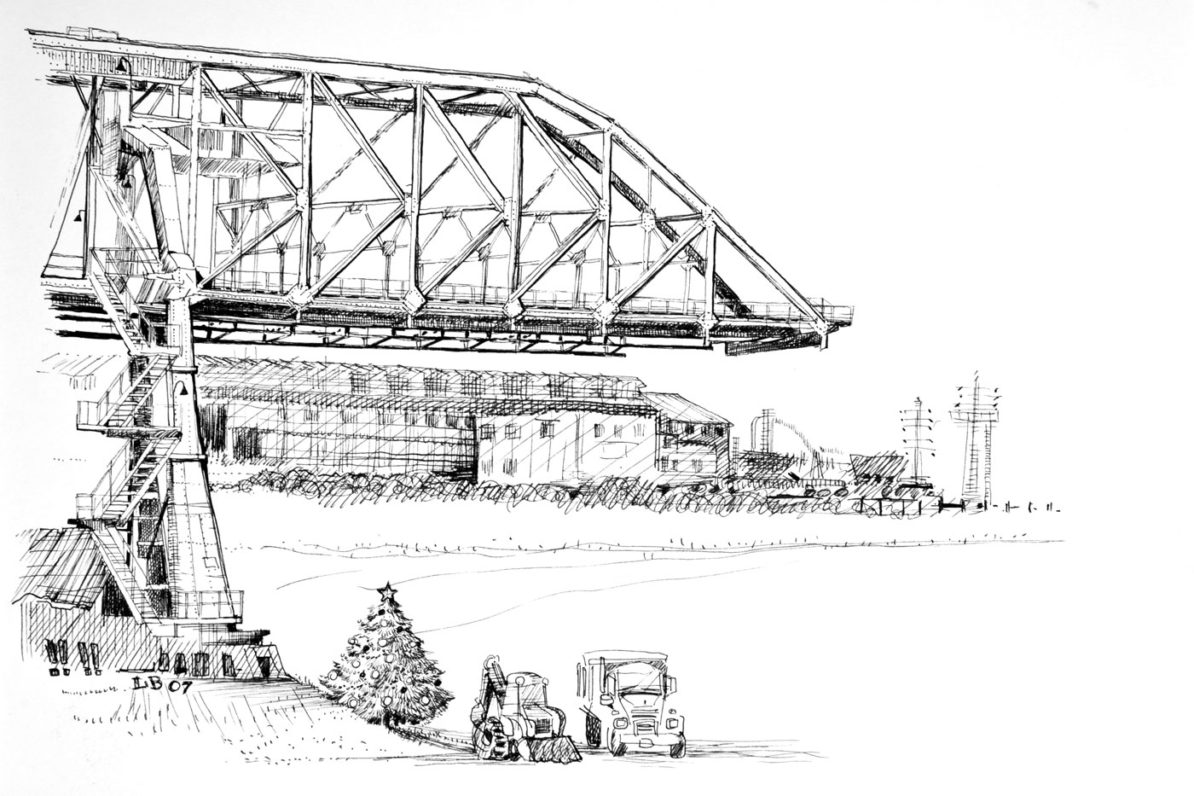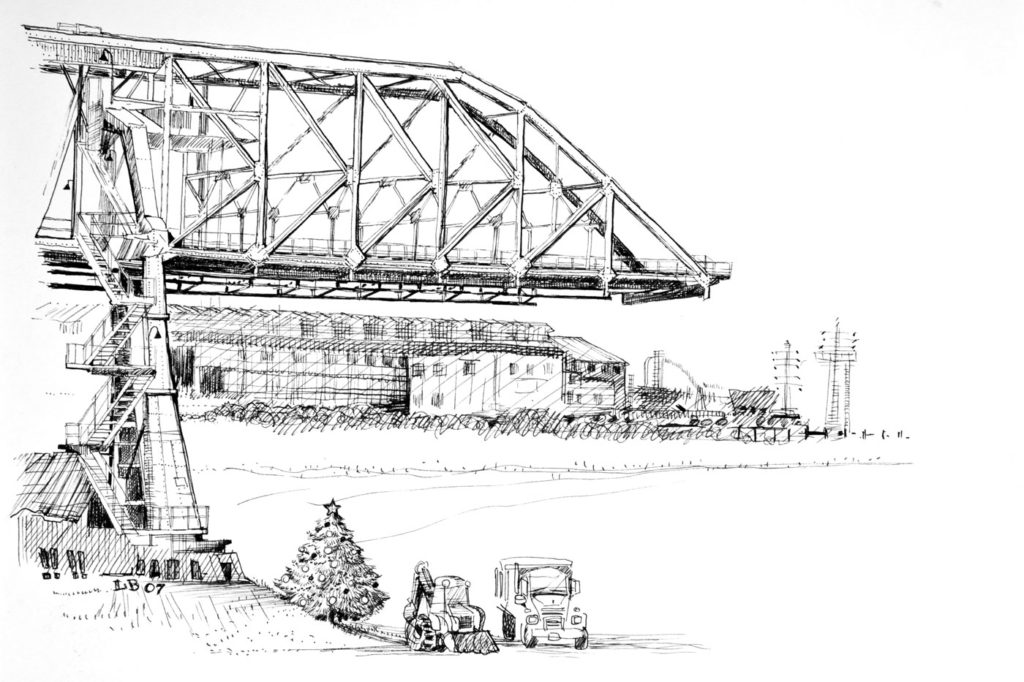

2007
Pen and Ink
10 inches x 10 inches
It looks like a bridge with no entrance or end.
It once held a crane station the size of a small house controlling cables that lifted dinosaur-mouthed ore buckets from mountains of stone below. The stuff would spill from the sides of its closed jaws as the yellow-helmeted operator drove his cab from one end of the black truss bridge to the other. An avalanche of stone was in the air before hitting the stops only to swing back again for another load. When that pile went down, the alarm bells sounded and the entire crane: base, towers, stairs, ramps, its bridge, house and bucket rolled slowly on massive I-beam rails below using an industrial carriage of wheels—moving to scoop another pile of raw material.
As a kid I could have watched it for hours.
Unfortunately, the only time I could witness this operation was from the back seat of my Dad’s car as we drove over the old Minsi Trail Bridge: the best part of any trip across town.
The bridge only had two-lanes back then, and everything beneath it was visible through the square grating beneath the car. The metal roadway doglegged right over the plant, hugging the ore yard, allowing drivers to catch the ore-crane spectacle overhead while the road beneath whined rubber on steel. As a passenger I could lean out the window, look directly down through the grating and see the Lehigh River rush by below. Sidewalks lined both sides of the bridge where thousands of steelworkers would walk those sidewalks at shift change—either coming to punch in, or going back to their cars parked in official Bethlehem Steel lots on the other side of the river.
During the “Steels” heyday, two of those ore-cranes ran day and night. Only the south crane remains today, stranded in position for all time and cut away from the track it once maneuvered. The mountains of ore are gone.
I got there in 2007 before the garish casino signage went up. I sketched it from the corner of East Third and Mechanic Street, a neighborhood in which steelworkers and their families once lived. There are seventeen old churches on the South side. One of them is St Stanislaus Polish. In the cemetery behind, which overlooks the mill. Photographers find ornate gravestones and place them in the same shot with the ruins of the steel company to create impressive contrasts.
But if you look at those burial markers you will discover the Hungarian, Polish and Slovak names of the workers who cast the steel in Bethlehem that built the Golden Gate Bridge.
